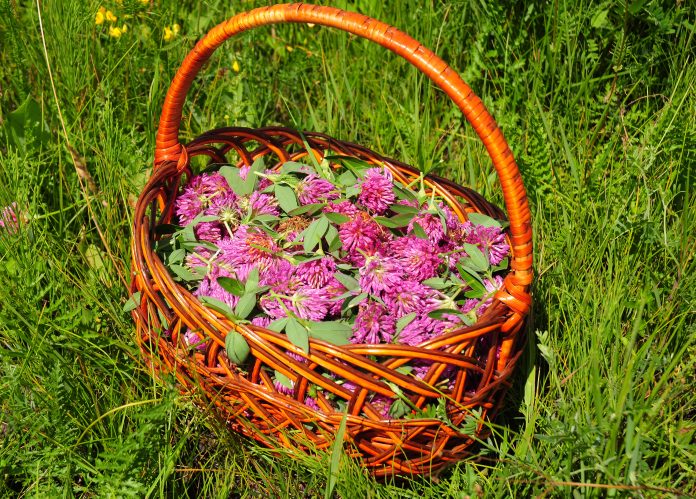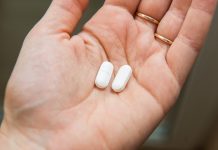Dr Deborah Lee from Dr Fox Online Pharmacy sheds light on the role of plants in drugs and medicines in this absorbing analysis
If you dare tell your doctor you’re taking a natural remedy, perhaps a herbal product, they often purse their lips and raise their eyebrows in a display of quiet disapproval. But why should this be, when so many medicines are derived from plants?
In current clinical practice, an incredible 80% of antibiotics, cardiovascular, immunotherapy and anticancer drugs, originate from plants. Most doctors are probably unaware of this because complementary and alternative medicine (CAM) has not traditionally been taught at medical school.
Plants provide a fantastic source of naturally occurring, biologically active substances, many of which have proven therapeutic effects. In the quest for medicines, nature — as always — knows best.
• What is the role of plants in drugs and medicines?
• Why are complementary and alternative medicines (CAMs) an attractive option for both patients and their doctors?
• Could CAMs be an option right now, to help prevent or treat COVID-19?
Have you heard of ethnopharmacology?
Ethnopharmacology is the study of medicines which derive from naturally occurring substances found in plants and fungi.
Step outside your back door and look in your own garden. Many plants in your own flower beds have been used for medicinal purposes, and in many instances, there is at least some research evidence to support this.
In my garden, I have roses, clematis, dahlias, and herbs.
Essential oil – Rose oil
In 2017, a review of 13 studies involving 772 patients, on the therapeutic efficacy of the use of rose oil, reported physiological evidence that aromatherapy with rose oil resulted in relaxation, reduced anxiety, and improved pain relief.
Clematis root
The root of this species of clematis – Clematis mandshurica ruprecht (CRE) – is often used in Asia as a CAM, to treat inflammation.
There is published evidence that CRE has anti-inflammatory effects. One 2017 research study in rats reported CRE resulted in lower levels of proinflammatory mediators. These included cytokines – cell-signalling molecules – such as tumour necrosis factor-α (TNF-α), interleukin (IL)-1β, IL-6, nitric oxide (NO), and prostaglandin E2 (PGE2).
The study investigators also noted clinical benefits including less tissue oedema (swelling), reduced skin thickness, and reduced infiltration of the local area by inflammatory cells. Research is now required to substantiate this in humans.
Dahlia root
Dahlia root is a good source of inulin, a type of soluble fibre, which can be used to help constipation, aid weight loss, and improve blood sugars in diabetics.
Rosemary, parsley, basil, and thyme
Many herbs and spices are well known to anti-inflammatory, antitumour, and anticarcinogenic properties, as well as having positive effects to lower lipids and support blood glucose metabolism. Other specific examples are cinnamon, ginger, turmeric, chilli peppers and garlic.
The cost of developing prescription medicines
As human beings, we cannot exist without medicines. In 2020, worldwide expenditure on prescription drugs is estimated at a staggering $1.3 trillion. It takes 10-15 years to research and develop a new drug, with a cost of around $1.3 billion.
After the lengthy and expensive drug development process has been completed, only one or two drugs out of every 10,000 will meet the required standards for use in clinical medicine. It’s also not uncommon for some drugs to be withdrawn within a few years of licensing due to side effects which were not apparent in phase 3 clinical trials.
For all these reasons, many research teams are turning their attention to researching traditional medicines, which derive from natural sources, such as plants, rather than synthesising new chemical compounds from scratch.
Why do many doctors view CAM with scepticism?
Many doctors view complementary and alternative medicines (CAM) with scepticism.
However, right now, in the midst of the viral pandemic, and with the NHS stretched to its very limits, maybe the time to reconsider this approach.
What do CAMs have to offer?
CAMs have much to offer. They appeal to patients as part of a holistic and natural approach to medicine, they generally have a good safety profile, and they can be used in situations where conventional medicines have been tried and failed.
In Germany, for example, 85% of GPs recommend the use of CAM to patients at least once a week. This is markedly different from a figure of around 20% in the UK. 77% of German doctors recommend herbal medicines, 41% recommend vitamin and supplements, and 32% use other homeopathic treatments.
Rethinking the rationale for CAM in primary care
In an interesting 2019 research study, twenty German doctors took part in face-to-face structured interviews. They described an important role of CAM for what they called ‘therapeutically indeterminate situations.’ These were consultations in which a GP sees a patient for whom either a traditional medical treatment is not necessary, or an evidence-based treatment is not available, but treatment is required. These consultations are common and can be due to minor illnesses, unexplained symptoms, or arise because of the need to treat people living with chronic diseases.
Most of the GP’s regarded CAMs as a supplementary option to be used alongside conventional medicines. They commented that the focus on science and evidence-based medicine leaves many unanswered questions. Quite commonly, the evidence underlying conventional medical treatments are said to be of poor quality and unconvincing. Research studies tend to report on findings aimed at groups of patients in certain categories and fail to consider patients as individuals.
The German doctors work with a firm ethos of trying to help the patient and do no harm. The GPs were more concerned their patients used a CAM and obtained symptomatic relief than worrying about the presence or absence of a true therapeutic effect. They believed even the power of a placebo is very welcome if it achieves success and were enthusiastic about any possible placebo effect.
The doctors also welcomed open discussion with patients about CAMs. The doctor typically finds themself in a conundrum – a patient is suffering and has come to see them with an expectation of treatment, which is either not strictly necessary or does not exist. CAMs remain a good, practical option in many of these circumstances.
CAMs and COVID-19
The use of nutrition to support the immune system and prevent viral infections such as influenza has been practised for many years. However, specific research on the effect of diet and nutrition and COVID-19 infection is lacking.
It would seem logical that foods which have antiviral properties, and/or positive effects on the immune system may well help to prevent or treat COVID-19 infection, although research to support these claims does not currently exist.
It’s important to view these CAMs as supplements to conventional therapy. They should be discussed with the doctor before embarking on any CAMs for a long term course of treatment.
CAM options which may help COVID-19
If you become infected with COVID-19, CAMs may help relieve some of your symptoms. Some CAMs may help reduce the chance of severe infection by supporting your immune system. Research into these treatments may never be undertaken for all the reasons already stated at the beginning of this article, and we may never get this information.
Current knowledge of dietary therapy and herbal remedies for COVID-19 prevention were recently published (July 2020) in the Journal of Traditional and Complementary Medicine.
Here are some CAM examples which may be useful against upper respiratory tract infections, influenza, and other viral infections.
Vitamin C
Many people take high dose vitamin C to prevent the common cold or the flu. Vitamin C is a powerful antioxidant and has been shown to have antiviral properties.
Vitamin C may also help relieve the symptoms of colds and flu. In one study, those who took vitamin C 1000 mg once an hour for six hours (a mega-dose), then three times a day during a cold, found their symptoms were reduced by 85%, compared to a control group who took vitamin C three times a day but did not take the initial mega dose.
Vitamin D
Low levels of vitamin D have been linked to a worse prognosis from COVID-19 infection. Vitamin D is required for the absorption of calcium from the gut. Vitamin D and calcium are important regulators of the immune system.
Vitamin D supplementation
The NHS currently recommends everyone in the UK should take a vitamin D supplement of 400 IU (10 μg) per day.
Red Ginseng
Red ginseng is known to activate the immune response by stimulating the production of cytokines, lymphocytes (white blood cells), and Natural Killer (NK) cells (these which work in conjunction with antibodies to kill and remove cells infected with foreign organisms.) In experimental conditions, human lung cells infected with the influenza virus, showed increased survival, after administration of red ginseng.
Echinacea purpurea (eastern purple coneflower)
This is known to stimulate phagocytosis – the process in which a white blood cell surrounds and then engulfs an infected or foreign cell and destroys it.
Eucalyptus oil and Peppermint oil
There has been growing interest in the use of essential oils for medicinal purposes. Most research has been done in animals, but some human studies have had promising results.
Eucalyptus oil – put 12 drops in 150ml of boiling water, and inhale three times a day.
Peppermint oil – put three to four drops in boiling water and inhale three times a day.
Neither of these treatments are suitable for children or pregnant women.
Honey and lemon
Honey and lemon are recommended by the British Thoracic Society Cough Guideline Group as a treatment for acute viral cough. Honey has a demulcent effect to thin out thick airway secretions. It also has strong antioxidant properties and stimulates the production of cytokines. In children, honey has been shown to have a better effect on reducing cough than traditional medicines, such as dextromethorphan.
Final thoughts
I have a newly found respect for plants and CAMs which has developed since the start of the COVID-19 pandemic. The attitude and experiences of German doctors and their use of CAM are refreshing. If we really want to help patients, why are we not making plant-based medicines more of a priority?
For more information
Journal of Traditional and Complementary Medicine – Dietary therapy and herbal medicine for COVID-19 prevention: A review and perspective – July 2020.
Study.com – Ethnopharmacology – Definitions and Examples.
Evidence-Based Alternative and Complementary Medicine – New Perspectives on How to Discover Drugs from Herbal Medicines: CAM’s Outstanding Contribution to Modern Therapeutics – March 2013.











